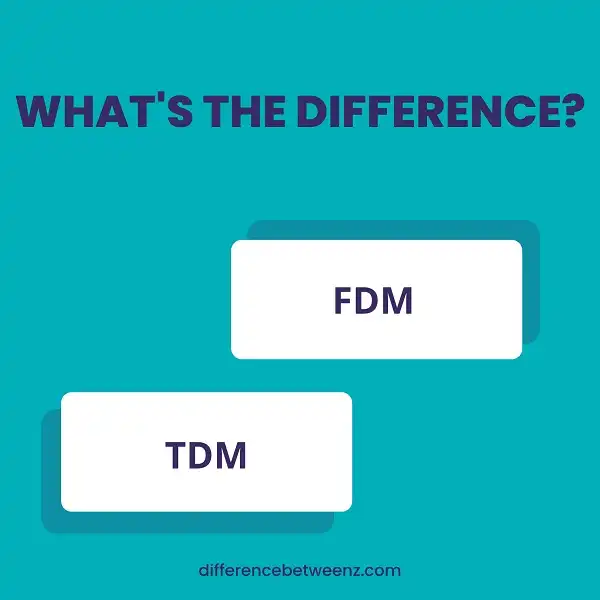Frequency-division multiplexing (FDM) and time-division multiplexing (TDM) are both used for transmitting digital signals on telephone lines. While FDM splits a signal into different frequency ranges, TDM breaks it up into sequential time slots. In this article, we will compare and contrast FDM and TDM, and discuss the pros and cons of each type of transmission.
What is FDM?
FDM is a multiplexing technique that enables multiple signals to be transmitted over a single physical channel. The signals are combined by subdividing the channel into multiple frequency bands, with each signal being allocated to a different band. FDM is commonly used in telecommunications applications, such as DSL and cable modem. FDM can also be used to transmit multiple channels of audio, video, and data over a single physical medium. For example, FDM is used in some HDTV systems to provide multiple video channels and audio channels. FDM is an efficient way to multiplex signals, and it has the advantage of being compatible with existing infrastructure.
What is TDM?
TDM is a form of data communications ( digital transmission ) in which two or more signals or bitstreams are combined into a single signal over a common channel, allowing multiple conversations to take place at the same time. TDM can be used with telephone conversations, computer data, and video signals. TDM retreats each signal into its own unique time slot within the signal structure. TDM uses a fixed time division within the channel to allow each signal to be allocated its own time slot on a recurring basis. This fixed time division allows multiple signals to share the same transmission path by dividing the path’s capacity into equal-sized time slots. TDM ensures that each signal has full access to the path for its associated time slot. The time slots assigned to each signal never overlap in order for TDM to achieve full efficiency. There are two main types of TDM: synchronous TDM and asynchronous TDM. STDM is most commonly used in digital voice applications while ATM is used for voice and data communications.
Difference between FDM and TDM
FDM and TDM are two types of digital multi-transmission systems. FDM is frequency-division multiplexing, while TDM is time-division multiplexing. FDM divides the bandwidth of a single channel into multiple subchannels, each of which carries a separate signal. TDM instead allocates each signal to a different time slot on a single channel. FDM requires less complex equipment than TDM and is more resistant to noise, but it is also more susceptible to crosstalk between channels. TDM can carry more signals than FDM and is less likely to experience attenuation, but it requires more complex equipment and is more sensitive to timing jitter.
Conclusion
We hope this article has helped you understand the difference between frequency-division multiplexing and time-division multiplexing. Each has its own strengths and weaknesses, so it’s important to know which one will work best for your specific needs. Thanks for reading!


